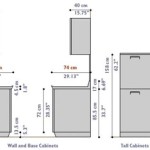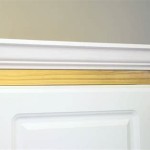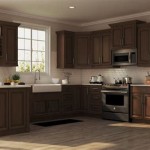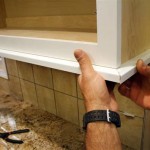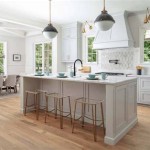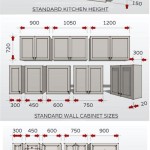Kitchen Wall Unit Shelves: Optimizing Space and Enhancing Design
Kitchen wall unit shelves represent a fundamental element in kitchen design, serving as both functional storage solutions and aesthetic enhancements. They offer a practical way to organize essential kitchen items while contributing to the overall visual appeal of the space. Understanding the various types, materials, installation considerations, and design options available for kitchen wall unit shelves is crucial for creating a well-organized and visually appealing kitchen environment.
The significance of wall-mounted shelving lies in its ability to maximize vertical space. In many kitchens, floor space is limited, making efficient use of wall space paramount. Wall unit shelves provide a dedicated area for storing dishes, glassware, spices, cookbooks, and various other kitchen necessities, freeing up valuable counter space and reducing clutter on the floor. This not only improves the kitchen's functionality but also contributes to a cleaner and more organized look.
Furthermore, the aesthetic impact of kitchen wall unit shelves should not be underestimated. They offer an opportunity to showcase decorative items, plants, or carefully curated collections, adding personality and visual interest to the kitchen. The wide variety of styles and finishes available allows for seamless integration with different kitchen design themes, from traditional to contemporary.
Types of Kitchen Wall Unit Shelves
The market offers a diverse range of kitchen wall unit shelves, each with unique features and benefits. Understanding the different types is essential for choosing the most suitable options for a specific kitchen design and storage needs.
Fixed Shelves: These are the most common type of wall shelves. They are permanently attached to the wall using brackets or directly mounted onto the studs. Fixed shelves are typically made of wood, metal, or glass and are available in various sizes and depths. They offer a stable and reliable storage solution for a wide range of kitchen items. The load-bearing capacity of fixed shelves is dependent on the material used and the installation method.
Adjustable Shelves: Adjustable shelves provide greater flexibility in terms of storage. They are typically supported by a system of vertical tracks or standards with pre-drilled slots, allowing the shelf height to be easily adjusted to accommodate items of different sizes. This makes them ideal for storing items that may vary in height, such as cookbooks, appliances, or containers. The adjustment mechanism offers adaptability and customization for individual storage requirements.
Floating Shelves: Floating shelves create a clean and minimalist look, as they appear to be suspended in mid-air without visible brackets or supports. This is achieved through the use of hidden mounting hardware. Floating shelves are available in various materials and finishes and can add a touch of contemporary elegance to any kitchen. However, it's important to note that floating shelves generally have a lower load-bearing capacity compared to fixed shelves with visible brackets, and careful installation following manufacturer's instructions is crucial to ensure stability and prevent sagging.
Corner Shelves: Corner shelves are designed to maximize storage in often-underutilized corner spaces. They are available in various shapes, including triangular, quarter-round, and tiered designs. Corner shelves provide a convenient and accessible storage solution for items that might otherwise be difficult to reach. They can also add visual interest and break up the monotony of straight lines in a kitchen design.
Open Shelving vs. Closed Cabinets: While technically not shelves on their own, it's important to consider open shelving as an alternative to traditional wall cabinets. Open shelving offers excellent visibility and accessibility to stored items, making it easy to locate and retrieve what is needed. However, it also requires more diligent organization and cleaning, as items on open shelves are more susceptible to dust and grease. Closed cabinets, on the other hand, provide concealed storage, keeping items hidden and protected from dust. The choice between open shelving and closed cabinets depends on individual preferences, lifestyle, and desired aesthetic.
Materials Used for Kitchen Wall Unit Shelves
The choice of material significantly impacts the durability, aesthetics, and overall cost of kitchen wall unit shelves. Understanding the properties of different materials is crucial for selecting the most appropriate options for a specific kitchen environment and budget.
Wood: Wood is a classic and versatile material that is widely used for kitchen wall unit shelves. It offers a warm and natural aesthetic and can be stained or painted to match any kitchen design. Solid wood is durable and can support significant weight, but it is also more expensive than other materials. Plywood and MDF (Medium-Density Fiberboard) are more affordable alternatives that can be used for shelving. However, they may not be as strong as solid wood and are more susceptible to moisture damage. When using wood in a kitchen environment, it's essential to ensure that it is properly sealed and protected from moisture.
Metal: Metal shelves offer a sleek and modern aesthetic and are known for their durability and strength. Stainless steel is a popular choice for kitchens due to its resistance to corrosion and its easy-to-clean surface. Metal shelves can also be powder-coated in various colors to match different kitchen designs. However, metal shelves can be more expensive than wood shelves and may not be suitable for all kitchen styles.
Glass: Glass shelves add a touch of elegance and sophistication to any kitchen. They are transparent, allowing light to pass through and create a sense of spaciousness. Glass shelves are easy to clean and are resistant to stains and moisture damage. However, glass shelves are more fragile than wood or metal shelves and may not be suitable for storing heavy items. Tempered glass is a stronger and safer option, but it is also more expensive.
Laminate: Laminate shelves are made of a thin layer of decorative paper or plastic that is bonded to a substrate such as MDF or particleboard. Laminate shelves are affordable and are available in a wide variety of colors and patterns. They are also easy to clean and are resistant to scratches and stains. However, laminate shelves are not as durable as wood, metal, or glass shelves and are more susceptible to moisture damage.
Acrylic: Acrylic shelves are a modern and durable option. They are available in various colors and thicknesses and can be molded into different shapes. Acrylic is a lightweight material that is resistant to scratches and UV damage. However, acrylic shelves can be more expensive than other materials and may require special cleaning products.
Installation and Design Considerations
Proper installation is crucial for ensuring the safety and stability of kitchen wall unit shelves. Incorrect installation can lead to shelves sagging, collapsing, or even falling off the wall, posing a safety hazard. Furthermore, careful design considerations are essential for creating a functional and aesthetically pleasing kitchen.
Stud Finders and Anchors: When installing kitchen wall unit shelves, it is essential to locate the wall studs and attach the shelves directly to them whenever possible. Wall studs provide the strongest and most secure attachment points. A stud finder can be used to locate the studs behind the drywall. If it is not possible to attach the shelves directly to the studs, wall anchors should be used to provide additional support. Different types of wall anchors are available, including drywall anchors, toggle bolts, and molly bolts. The appropriate type of wall anchor will depend on the weight of the items being stored on the shelves and the type of wall material.
Shelf Depth and Height: The depth and height of kitchen wall unit shelves should be carefully considered based on the items being stored. Deeper shelves can accommodate larger items, but they can also make it difficult to reach items at the back. Shallower shelves create a more streamlined look and are better suited for storing frequently used items. The height of the shelves should be adjusted to accommodate items of different sizes. Adjustable shelves offer greater flexibility in this regard. It's also important to consider the overall height of the shelves in relation to the countertop and other kitchen elements to ensure that they are easily accessible and do not obstruct the workflow.
Lighting: Incorporating lighting into kitchen wall unit shelves can enhance their functionality and aesthetic appeal. Under-cabinet lighting can be installed beneath the shelves to illuminate the countertop and provide task lighting for food preparation. LED strip lights can be installed along the edges of the shelves to highlight decorative items or create a warm and inviting ambiance. Recessed lighting can be used to illuminate the shelves from above, creating a dramatic effect.
Style and Finish: The style and finish of kitchen wall unit shelves should complement the overall kitchen design. For a traditional kitchen, wood shelves with a warm stain or painted finish may be appropriate. For a modern kitchen, metal or glass shelves with a sleek and minimalist design may be a better choice. The finish of the shelves should also be durable and easy to clean. Consider the existing cabinet hardware, countertop materials, and backsplash when selecting the style and finish of the shelves.
Load Capacity: Always be aware of the weight capacity of the shelves. Overloading shelves can lead to sagging or even complete failure. Distribute the weight evenly across the shelf to prevent concentrated stress points. Consult the manufacturer's specifications for the maximum weight capacity of the shelves and use appropriate mounting hardware to ensure a secure installation.
By carefully considering these factors, one can implement kitchen wall unit shelves effectively. It leads to a more efficient and visually pleasing kitchen space.

S71 Solid Wood Handmade Shelving Unit Wall Mounted Kitchen Cabinet Traditional Tea Open

Hampton Bay Designer Series Melvern Assembled 36x30x12 In Wall Open Shelf Kitchen Cabinet White Wos3630 Mlwh

Rustic Wall Unit Various Depths W Three Shelves Farmhouse Floating Shelf Kitchen Open Office Bookcase Coffee Bar

Bestier 24 Kitchen Wall Shelves 2 Tier Floating For Bathroom Bedroom Retro Grey Oak

Hampton Bay Designer Series Melvern Assembled 36x30x12 In Wall Open Shelf Kitchen Cabinet White Wos3630 Mlwh

Wall Of Kitchen Shelving Design Ideas

Kitchen Cabinet Wall Hanging Pantry Storage Shelf With Shaker Pegs

Vintage Double Door Wall Cabinet With Glass Doors Brown Aosom Com

Bestier 31 Kitchen Wall Shelves 3 Tier Floating For Bathroom Bedroom Rustic Brown

Hampton Bay Designer Series Melvern Assembled 36x30x12 In Wall Open Shelf Kitchen Cabinet White
Related Posts

